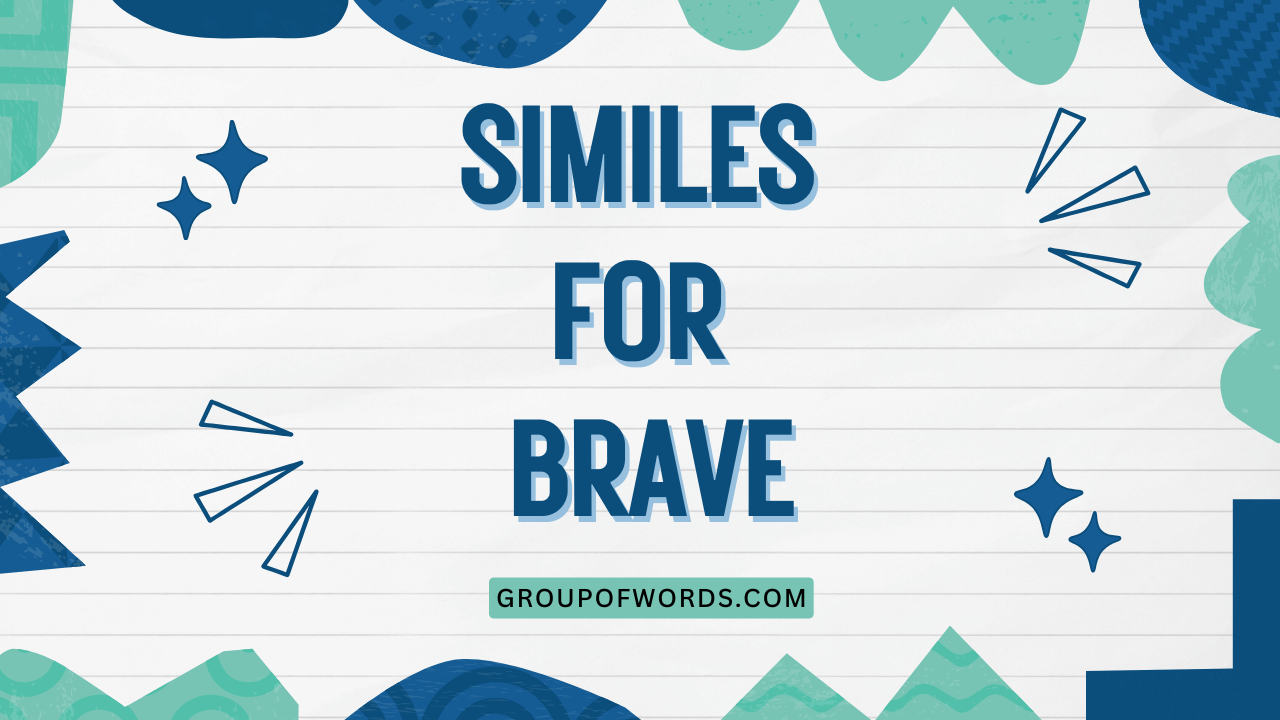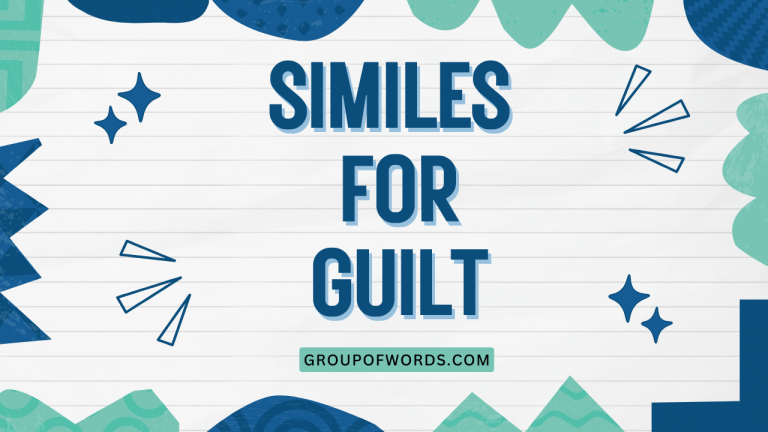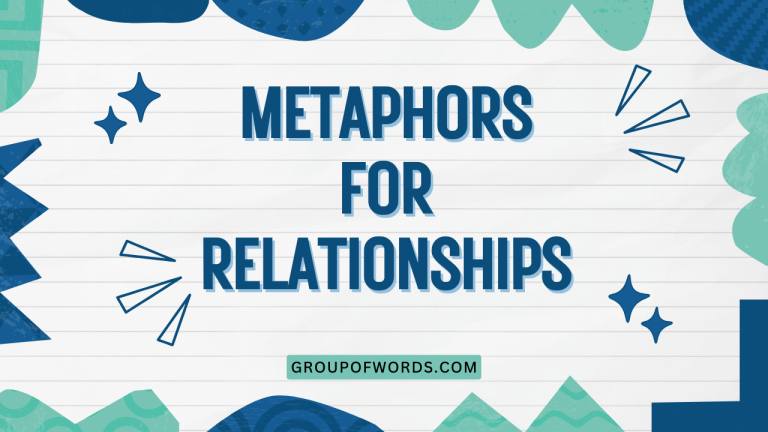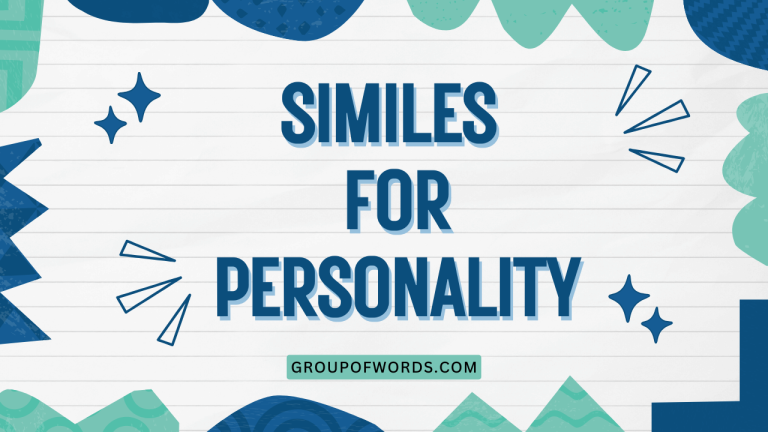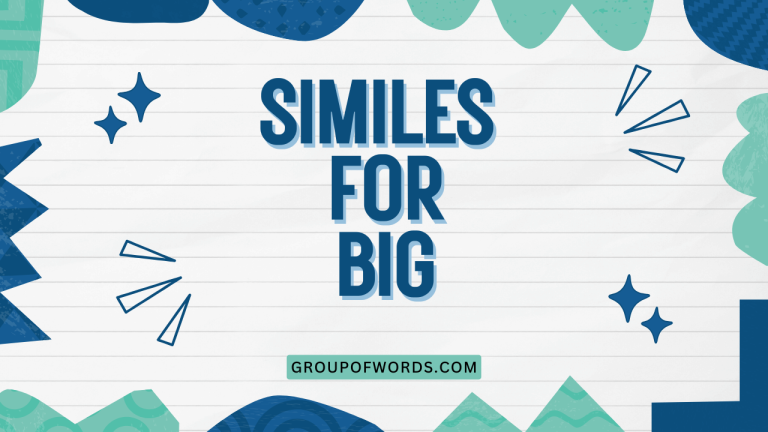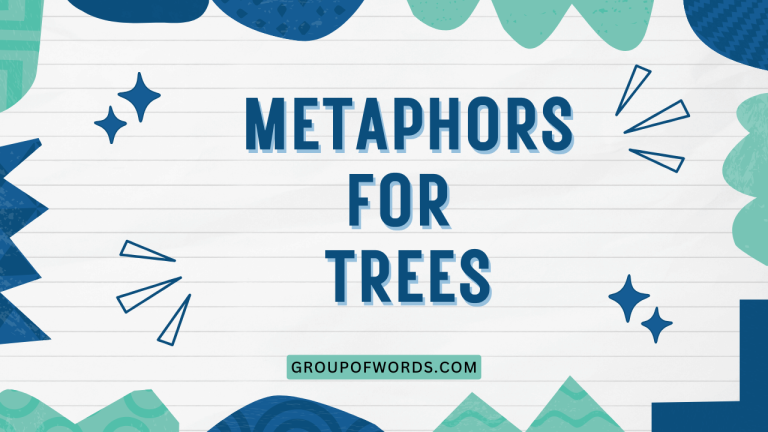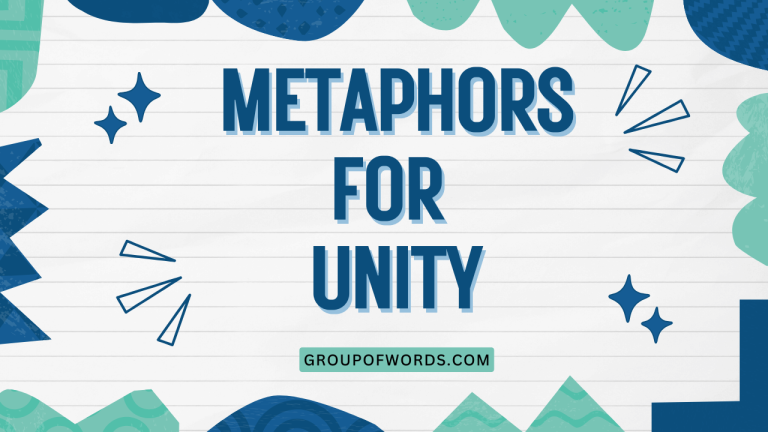Similes for Brave: Mastering Figurative Language
Understanding similes is crucial for enhancing your writing and comprehension skills. Similes, a type of figurative language, allow you to create vivid comparisons and paint compelling pictures with words.
Specifically, exploring similes for “brave” can significantly enrich your vocabulary and enable you to describe courage in more imaginative and impactful ways. This article provides a comprehensive guide to similes for “brave,” suitable for English language learners of all levels, from beginners to advanced students.
By delving into the nuances of similes, you’ll not only improve your ability to express yourself more effectively but also gain a deeper appreciation for the art of language. Whether you’re preparing for an exam, writing a story, or simply looking to expand your linguistic toolkit, this guide will equip you with the knowledge and examples you need to master the use of similes for “brave.”
Table of Contents
- Definition of Simile
- Structural Breakdown of Similes
- Types of Similes for Brave
- Examples of Similes for Brave
- Usage Rules for Similes
- Common Mistakes with Similes
- Practice Exercises
- Advanced Topics: Nuances and Subtleties
- Frequently Asked Questions
- Conclusion
Definition of Simile
A simile is a figure of speech that compares two unlike things using the words “like” or “as.” The primary function of a simile is to enhance the description by drawing a parallel between the subject and something that is commonly understood or evokes a specific image. Unlike metaphors, which directly state that one thing *is* another, similes acknowledge the comparison with explicit words like “like” or “as”.
This distinction is crucial in understanding how similes function within the broader context of figurative language.
Similes are used extensively in literature, poetry, and everyday conversation to make language more vivid and engaging. They help readers and listeners visualize and understand concepts more clearly by relating them to familiar experiences.
For instance, instead of simply saying someone is brave, a simile might describe them as “brave as a lion,” immediately conjuring an image of strength and courage. The effectiveness of a simile lies in its ability to create a memorable and impactful comparison.
Structural Breakdown of Similes
The basic structure of a simile consists of three main components: the subject, the comparative word (“like” or “as”), and the object of comparison. The subject is the entity being described, and the object of comparison is what it’s being compared to.
The comparative word serves as the bridge between the two, indicating that the subject shares a quality with the object. Understanding this structure is essential for constructing effective and meaningful similes.
Here’s a simple breakdown:
- Subject: The person or thing being described (e.g., the soldier)
- Comparative Word: “like” or “as”
- Object of Comparison: The thing the subject is being compared to (e.g., a lion)
Example: “The soldier was as brave as a lion.”
In this example, “the soldier” is the subject, “as” is the comparative word, and “a lion” is the object of comparison. The simile suggests that the soldier possesses a level of bravery similar to that of a lion, known for its courage and ferocity.
The power of the simile lies in its ability to evoke a strong image and convey a deeper understanding of the soldier’s bravery.
Types of Similes for Brave
Similes for “brave” can be categorized based on the specific aspect of bravery they emphasize. These categories help to refine and diversify the ways in which courage is described.
Understanding these different types can assist in choosing the most appropriate simile for a particular context.
Similes Emphasizing Fearlessness
These similes highlight the absence of fear in the face of danger. They suggest a natural or inherent quality of not being afraid, even in challenging situations.
These similes often use animals known for their lack of fear or objects that represent unwavering stability.
Similes Emphasizing Lionheartedness
These similes draw a direct comparison to the courage and strength of a lion. They emphasize a bold and valiant spirit, often associated with leadership and unwavering resolve.
These similes are particularly effective in conveying a sense of grandeur and nobility.
Similes Emphasizing Resolute Actions
These similes focus on the determined and unwavering actions of someone who is brave. They highlight the steadfast commitment to a cause or goal, despite facing obstacles and challenges.
These similes are often used to describe individuals who exhibit perseverance and dedication.
Similes Emphasizing Undaunted Spirit
These similes emphasize a spirit that remains unbroken and enthusiastic despite facing adversity. They highlight resilience and the ability to maintain morale and determination in challenging circumstances.
These similes are often used to describe individuals who inspire others with their unwavering optimism.
Similes Emphasizing Stoic Endurance
These similes focus on the capacity to endure pain or hardship without showing feelings or complaining. They highlight inner strength and the ability to remain composed and steadfast under pressure.
These similes are often used to describe individuals who exhibit great self-control and emotional fortitude.
Examples of Similes for Brave
The following sections provide extensive examples of similes for “brave,” categorized according to the types discussed above. Each example is designed to illustrate the specific nuance of bravery being conveyed.
These examples will enhance your understanding and application of similes in your writing and speech.
Similes Comparing Bravery to Fearlessness
These similes highlight the absence of fear, portraying bravery as a natural and inherent quality. They often use imagery of animals or objects known for their unwavering nature.
Each example below showcases a unique way to describe bravery as a lack of fear, adding depth and variety to your descriptive language.
The table below provides examples of similes that compare bravery to fearlessness.
| Simile | Explanation |
|---|---|
| As brave as a honey badger | Honey badgers are known for their fearlessness, even against larger predators. |
| As brave as a soldier on the front lines | Soldiers in combat are often required to face extreme danger without hesitation. |
| As brave as a firefighter running into a burning building | Firefighters routinely risk their lives to save others, demonstrating extraordinary courage. |
| As brave as a surgeon performing a risky operation | Surgeons require immense courage to make critical decisions under pressure. |
| As brave as a mountain climber scaling a treacherous peak | Mountain climbers face numerous hazards, requiring significant bravery and skill. |
| As brave as a child facing their fears | Overcoming childhood fears can be a significant act of bravery for a young person. |
| As brave as a whistleblower exposing corruption | Whistleblowers often face retaliation for their actions, requiring great courage. |
| As brave as a diver exploring the deep sea | Deep-sea divers face unknown dangers in a hostile environment, requiring immense bravery. |
| As brave as a pilot landing a damaged plane | Pilots in emergency situations must remain calm and courageous to save lives. |
| As brave as a doctor fighting a deadly disease | Doctors on the front lines of epidemics display remarkable bravery and dedication. |
| As brave as a social worker protecting vulnerable children | Social workers often face challenging and dangerous situations to safeguard children. |
| As brave as a journalist reporting from a war zone | Journalists in war zones risk their lives to bring important stories to the world. |
| As brave as a activist fighting for human rights | Activists challenging oppressive regimes often face severe consequences for their bravery. |
| As brave as a parent protecting their child | Parents instinctively protect their children, often displaying extraordinary bravery. |
| As brave as a scientist pursuing a groundbreaking discovery | Scientists often face skepticism and setbacks, requiring perseverance and bravery. |
| As brave as a teacher inspiring students in a challenging environment | Teachers who work in difficult schools show remarkable bravery and commitment. |
| As brave as a nurse caring for patients during a pandemic | Nurses who risk their own health to care for others are incredibly brave. |
| As brave as a volunteer helping in a disaster zone | Volunteers who assist in disaster zones often face dangerous and unpredictable situations. |
| As brave as a judge upholding the law despite threats | Judges who stand up for justice despite threats to their safety are incredibly brave. |
| As brave as a CEO making difficult decisions to save a company | Leaders who make tough choices to protect their employees and business are showing bravery. |
| As brave as a student standing up to a bully | Students who confront bullies demonstrate incredible courage and resilience. |
| As brave as an artist expressing themselves despite criticism | Artists who share their unique vision despite negative feedback show bravery. |
| As brave as an entrepreneur starting a business | Entrepreneurs who take risks to pursue their dreams are demonstrating bravery. |
| As brave as a writer sharing their personal story | Writers who are vulnerable and honest in their writing show bravery. |
| As brave as a musician performing on stage | Musicians who overcome stage fright to share their music with the world are showing bravery. |
| As brave as someone facing a terminal illness | People who face terminal illness with dignity and strength are incredibly brave. |
| As brave as someone overcoming addiction | People who battle addiction and seek help are demonstrating bravery. |
| As brave as someone speaking out against injustice | People who are willing to challenge injustice are showing bravery. |
| As brave as someone who is vulnerable and honest with their feelings | People who are able to be open and honest about their feelings are showing bravery. |
Similes Comparing Bravery to Lionheartedness
These similes directly compare bravery to the courage and strength associated with a lion. They evoke a sense of nobility, boldness, and unwavering resolve.
Using these similes can add a powerful and evocative dimension to your descriptions of bravery, creating a strong impression of courage and valor.
The table below provides examples of similes that compare bravery to lionheartedness.
| Simile | Explanation |
|---|---|
| As brave as a lion | A classic simile, directly comparing bravery to the traditionally courageous lion. |
| As lionhearted as a king defending his realm | Emphasizes the regal and protective aspect of bravery. |
| As lionhearted as a knight in shining armor | Evokes a sense of chivalry and unwavering courage. |
| As lionhearted as a gladiator facing his opponent | Highlights the fierce and combative aspect of bravery. |
| As lionhearted as a warrior charging into battle | Emphasizes the bold and aggressive nature of bravery. |
| As lionhearted as a leader inspiring his troops | Highlights the motivational and influential aspect of bravery. |
| As lionhearted as a rescuer saving lives | Emphasizes the selflessness and heroic nature of bravery. |
| As lionhearted as a defender standing against tyranny | Highlights the moral and righteous aspect of bravery. |
| As lionhearted as a champion fighting for justice | Emphasizes the fairness and advocacy aspect of bravery. |
| As lionhearted as a pioneer exploring new frontiers | Highlights the adventurous and exploratory aspect of bravery. |
| As lionhearted as a rebel challenging the status quo | Emphasizes the defiant and transformative aspect of bravery. |
| As lionhearted as a protector shielding the weak | Highlights the caring and empathetic aspect of bravery. |
| As lionhearted as a visionary pursuing a dream | Emphasizes the ambitious and aspirational aspect of bravery. |
| As lionhearted as a survivor overcoming adversity | Emphasizes the resilient and persevering aspect of bravery. |
| As lionhearted as an advocate speaking for the voiceless | Emphasizes the compassionate and supportive aspect of bravery. |
| As lionhearted as a caregiver tending to the sick | Emphasizes the nurturing and dedicated aspect of bravery. |
| As lionhearted as a mentor guiding the young | Emphasizes the influential and supportive aspect of bravery. |
| As lionhearted as a peacemaker mediating conflict | Emphasizes the diplomatic and harmonious aspect of bravery. |
| As lionhearted as a healer mending the wounded | Emphasizes the restorative and compassionate aspect of bravery. |
| As lionhearted as someone facing their fears head-on | Emphasizes the confrontational and courageous aspect of bravery. |
| As lionhearted as someone standing alone for their beliefs | Emphasizes the individual and principled aspect of bravery. |
| As lionhearted as someone forgiving those who have wronged them | Emphasizes the compassionate and forgiving aspect of bravery. |
| As lionhearted as someone learning from their mistakes | Emphasizes the reflective and growth-oriented aspect of bravery. |
| As lionhearted as someone embracing change and new challenges | Emphasizes the adaptable and open-minded aspect of bravery. |
| As lionhearted as someone fighting for equality and justice | Emphasizes the ethical and righteous aspect of bravery. |
| As lionhearted as someone speaking truth to power | Emphasizes the assertive and challenging aspect of bravery. |
| As lionhearted as someone supporting those who are vulnerable | Emphasizes the caring and empathetic aspect of bravery. |
| As lionhearted as someone creating art that challenges social norms | Emphasizes the expressive and innovative aspect of bravery. |
| As lionhearted as someone building bridges between different cultures | Emphasizes the inclusive and harmonious aspect of bravery. |
Similes Comparing Bravery to Resolute Actions
These similes emphasize the unwavering commitment and determination that characterize bravery. They focus on actions that demonstrate a steadfast resolve in the face of adversity.
Using these similes can effectively convey the idea of bravery as a persistent and unwavering force, showcasing the power of determination and dedication.
The table below provides examples of similes that compare bravery to resolute actions.
| Simile | Explanation |
|---|---|
| As brave as a rock standing against the waves | Emphasizes the steadfast and unyielding nature of bravery. |
| As brave as a marathon runner pushing through the pain | Highlights the endurance and perseverance aspect of bravery. |
| As brave as a climber ascending a steep cliff | Emphasizes the determination and ambition aspect of bravery. |
| As brave as a tree weathering a storm | Highlights the resilience and steadfastness aspect of bravery. |
| As brave as a beacon guiding ships through the night | Emphasizes the reliability and guidance aspect of bravery. |
| As brave as a dam holding back a flood | Highlights the strength and control aspect of bravery. |
| As brave as a lighthouse standing against the sea | Emphasizes the resilience and unwavering nature of bravery. |
| As brave as a fortress defending against attack | Highlights the protective and unyielding nature of bravery. |
| As brave as a surgeon performing a critical operation | Emphasizes the skilled and decisive aspect of bravery. |
| As brave as a lawyer arguing a difficult case | Emphasizes the persuasive and determined aspect of bravery. |
| As brave as a teacher inspiring students to learn | Emphasizes the motivational and dedicated aspect of bravery. |
| As brave as a scientist pursuing a breakthrough | Emphasizes the persistent and innovative aspect of bravery. |
| As brave as an artist creating a masterpiece | Emphasizes the passionate and dedicated aspect of bravery. |
| As brave as a writer crafting a powerful story | Emphasizes the expressive and determined aspect of bravery. |
| As brave as a musician composing a moving symphony | Emphasizes the creative and passionate aspect of bravery. |
| As brave as a dancer performing with grace and strength | Emphasizes the artistic and powerful aspect of bravery. |
| As brave as a chef creating a culinary delight | Emphasizes the creative and dedicated aspect of bravery. |
| As brave as a gardener nurturing life in the soil | Emphasizes the caring and dedicated aspect of bravery. |
| As brave as a builder constructing a sturdy home | Emphasizes the reliable and dedicated aspect of bravery. |
| As brave as someone standing up for what they believe in | Emphasizes the principled and resolute aspect of bravery. |
| As brave as someone fighting for their rights | Emphasizes the determined and assertive aspect of bravery. |
| As brave as someone challenging injustice | Emphasizes the ethical and resolute aspect of bravery. |
| As brave as someone advocating for others | Emphasizes the supportive and resolute aspect of bravery. |
| As brave as someone speaking truth to power | Emphasizes the assertive and principled aspect of bravery. |
| As brave as someone defending the vulnerable | Emphasizes the protective and resolute aspect of bravery. |
| As brave as someone persevering through hardship | Emphasizes the resilient and resolute aspect of bravery. |
| As brave as someone overcoming adversity | Emphasizes the determined and resolute aspect of bravery. |
| As brave as someone facing their fears head-on | Emphasizes the courageous and resolute aspect of bravery. |
| As brave as someone embracing new challenges | Emphasizes the adaptable and resolute aspect of bravery. |
Similes Comparing Bravery to Undaunted Spirit
These similes highlight the unbroken spirit and unwavering enthusiasm that define bravery. They focus on the ability to maintain morale and determination even in the face of challenging circumstances.
Using these similes can effectively convey the idea of bravery as a resilient and optimistic force, showcasing the power of an undaunted spirit.
The table below provides examples of similes that compare bravery to an undaunted spirit.
| Simile | Explanation |
|---|---|
| As brave as a flame that refuses to be extinguished | Emphasizes the persistent and unyielding nature of bravery. |
| As brave as a river that continues to flow despite obstacles | Highlights the resilient and adaptable aspect of bravery. |
| As brave as a seed that sprouts even in rocky soil | Emphasizes the persevering and determined aspect of bravery. |
| As brave as a star that shines brightly in the darkest night | Highlights the radiant and unwavering aspect of bravery. |
| As brave as a bird that sings even during a storm | Emphasizes the optimistic and resilient aspect of bravery. |
| As brave as a flower that blooms in the desert | Highlights the resilient and vibrant aspect of bravery. |
| As brave as a candle that lights up a dark room | Emphasizes the illuminating and resilient aspect of bravery. |
| As brave as a heart that continues to beat despite pain | Highlights the enduring and resilient aspect of bravery. |
| As brave as a smile that shines through tears | Emphasizes the optimistic and resilient aspect of bravery. |
| As brave as a voice that speaks out against injustice | Emphasizes the assertive and principled aspect of bravery. |
| As brave as a hand that reaches out to help others | Emphasizes the supportive and compassionate aspect of bravery. |
| As brave as a mind that continues to learn and grow | Emphasizes the curious and resilient aspect of bravery. |
| As brave as a spirit that refuses to be broken | Emphasizes the unyielding and resilient aspect of bravery. |
| As brave as a soul that seeks truth and justice | Emphasizes the ethical and resilient aspect of bravery. |
| As brave as a will that never gives up | Emphasizes the determined and resilient aspect of bravery. |
| As brave as a dream that inspires hope | Emphasizes the aspirational and resilient aspect of bravery. |
| As brave as a story that touches hearts | Emphasizes the empathetic and resilient aspect of bravery. |
| As brave as a song that lifts spirits | Emphasizes the uplifting and resilient aspect of bravery. |
| As brave as a painting that captures beauty | Emphasizes the artistic and resilient aspect of bravery. |
| As brave as someone who faces their fears with courage | Emphasizes the courageous and resilient aspect of bravery. |
| As brave as someone who stands up for what’s right | Emphasizes the principled and resilient aspect of bravery. |
| As brave as someone who supports those in need | Emphasizes the compassionate and resilient aspect of bravery. |
| As brave as someone who speaks out against injustice | Emphasizes the assertive and resilient aspect of bravery. |
| As brave as someone who fights for equality | Emphasizes the ethical and resilient aspect of bravery. |
| As brave as someone who never loses hope | Emphasizes the optimistic and resilient aspect of bravery. |
| As brave as someone who perseveres through adversity | Emphasizes the determined and resilient aspect of bravery. |
| As brave as someone who overcomes challenges with grace | Emphasizes the adaptable and resilient aspect of bravery. |
| As brave as someone who embraces change with enthusiasm | Emphasizes the open-minded and resilient aspect of bravery. |
| As brave as someone who inspires others with their spirit | Emphasizes the motivational and resilient aspect of bravery. |
Similes Comparing Bravery to Stoic Endurance
These similes focus on the ability to endure pain or hardship without showing feelings or complaining. They highlight inner strength and the capacity to remain composed and steadfast under pressure.
Using these similes can effectively convey the idea of bravery as a form of quiet, unwavering resilience, emphasizing the power of self-control and emotional fortitude.
The table below provides examples of similes that compare bravery to stoic endurance:
| Simile | Explanation |
|---|---|
| As brave as a statue weathering centuries of storms | Emphasizes the enduring and stoic nature of bravery. |
| As brave as a monk meditating through physical discomfort | Highlights the self-disciplined and stoic aspect of bravery. |
| As brave as a soldier enduring torture without revealing secrets | Emphasizes the unwavering and stoic aspect of bravery. |
| As brave as a cancer patient facing treatment with quiet resolve | Highlights the resilient and stoic aspect of bravery. |
| As brave as a parent working multiple jobs to provide for their family without complaint | Emphasizes the dedicated and stoic aspect of bravery. |
| As brave as a prisoner of war maintaining dignity in captivity | Highlights the resilient and stoic aspect of bravery. |
| As brave as a caregiver tending to a sick loved one with tireless patience | Emphasizes the compassionate and stoic aspect of bravery. |
| As brave as a refugee rebuilding their life after losing everything | Highlights the resilient and stoic aspect of bravery. |
| As brave as someone facing a terminal illness with acceptance and grace | Highlights the dignified and stoic aspect of bravery. |
| As brave as someone overcoming addiction with unwavering determination | Emphasizes the self-disciplined and stoic aspect of bravery. |
| As brave as someone forgiving a betrayer without seeking revenge | Highlights the compassionate and stoic aspect of bravery. |
| As brave as someone accepting criticism with humility and a desire to improve | Emphasizes the self-aware and stoic aspect of bravery. |
| As brave as someone maintaining composure in the face of public scrutiny | Highlights the controlled and stoic aspect of bravery. |
| As brave as someone enduring physical pain without showing weakness | Emphasizes the resilient and stoic aspect of bravery. |
| As brave as someone continuing their work despite personal loss | Highlights the dedicated and stoic aspect of bravery. |
| As brave as someone maintaining their faith in the face of doubt | Highlights the steadfast and stoic aspect of bravery. |
| As brave as someone upholding their principles despite social pressure | Highlights the principled and stoic aspect of bravery. |
| As brave as someone facing their mortality with acceptance | Highlights the dignified and stoic aspect of bravery. |
| As brave as someone finding peace within themselves despite external chaos | Highlights the self-aware and stoic aspect of bravery. |
| As brave as someone supporting a friend through a difficult time without judgment | Highlights the compassionate and stoic aspect of bravery. |
| As brave as someone speaking out against injustice while expecting no recognition | Highlights the principled and stoic aspect of bravery. |
| As brave as someone working towards a goal with no guarantee of success | Highlights the determined and stoic aspect of bravery. |
| As brave as someone pursuing their passion despite setbacks | Highlights the resilient and stoic aspect of bravery. |
| As brave as someone learning from their mistakes without self-pity | Highlights the self-aware and stoic aspect of bravery. |
| As brave as someone offering forgiveness to those who have wronged them | Highlights the compassionate and stoic aspect of bravery. |
| As brave as someone maintaining hope during periods of uncertainty | Highlights the resilient and stoic aspect of bravery. |
| As brave as someone who continues to grow and learn from every experience. | Highlights the adaptable and stoic aspect of bravery. |
| As brave as someone who stays true to their values despite external pressure. | Highlights the principled and stoic aspect of bravery. |
| As brave as someone who finds strength in solitude and self-reflection. | Highlights the self-aware and stoic aspect of bravery. |
Usage Rules for Similes
Using similes effectively involves understanding a few key rules. First, ensure that the comparison is clear and relevant.
The object of comparison should have a quality that is easily recognizable and directly relates to the subject being described. Second, avoid clichés.
Overused similes can weaken your writing rather than strengthen it. Strive for originality and creativity in your comparisons.
Third, consider the context. The appropriateness of a simile depends on the tone and style of your writing or speech.
Key Guidelines:
- Clarity: The comparison should be easily understood.
- Relevance: The object of comparison should share a relevant quality with the subject.
- Originality: Avoid overused clichés.
- Context: Ensure the simile fits the tone and style of your writing.
Common Mistakes with Similes
One of the most common mistakes is using similes that are too generic or cliché. For example, “as brave as a lion” is a well-known simile, but it lacks originality and impact.
Another mistake is creating comparisons that are illogical or confusing. The object of comparison should have a clear and understandable relationship to the subject.
Additionally, mixing metaphors and similes can lead to confusing and ineffective descriptions. It’s important to maintain consistency in your use of figurative language.
Correct vs. Incorrect Examples:
| Incorrect | Correct | Explanation |
|---|---|---|
| As brave as a door | As brave as a firefighter | A door doesn’t have any association with bravery. |
| He was like bravery. | He was as brave as a soldier. | The first example doesn’t use a proper comparative word or object. |
| She was a lion, like a lamb. | She was as brave as a lion. | Mixing metaphors and similes creates confusion. |
Practice Exercises
These practice exercises will help you reinforce your understanding of similes for “brave.” Each exercise includes a series of questions designed to test your ability to identify, create, and use similes effectively. Answers are provided to help you check your work and learn from any mistakes.
Exercise 1: Identifying Similes
Identify the similes in the following sentences:
| Question | Answer |
|---|---|
| 1. He was as brave as a firefighter running into a burning building. | as brave as a firefighter running into a burning building |
| 2. She faced her fears with the courage of a lion. | N/A (metaphor) |
| 3. The soldier stood as brave as a rock against the enemy. | as brave as a rock |
| 4. His heart was a fortress of courage. | N/A (metaphor) |
| 5. The activist spoke as bravely as a lawyer defending the innocent. | as bravely as a lawyer defending the innocent |
| 6. She was like a beacon of hope, brave and unwavering. | like a beacon of hope |
| 7. He fought like a tiger, brave and relentless. | like a tiger |
| 8. The climber ascended the mountain with the bravery of an eagle. | N/A (metaphor) |
| 9. As brave as a honey badger, she faced the challenge head-on. | As brave as a honey badger |
| 10. The nurse cared for the patients with the bravery of a saint. | N/A (metaphor) |
Exercise 2: Completing Similes
Complete the following similes with appropriate objects of comparison:
| Question | Answer |
|---|---|
| 1. As brave as ____________. | a lion |
| 2. As lionhearted as ____________. | a king |
| 3. As resolute as ____________. | a rock |
| 4. As undaunted as ____________. | a flame |
| 5. As stoic as ____________. | a statue |
Exercise 3: Creating Similes
Create your own similes for “brave” based on the following prompts:
| Prompt | Example Answer |
|---|---|
| 1. Describe a child being brave. | As brave as a child facing a monster under their bed. |
| 2. Describe a doctor being brave. | As brave as a doctor diagnosing a rare disease. |
| 3. Describe a teacher being brave. | As brave as a teacher standing up to a bully. |
| 4. Describe a soldier being brave. | As brave as a soldier holding the line during an attack. |
| 5. Describe a firefighter being brave. | As brave as a firefighter rescuing a child from a burning building. |
Advanced Topics: Nuances and Subtleties
Mastering similes involves understanding their nuances and subtleties. Advanced learners should focus on creating similes that not only convey bravery but also evoke specific emotions or imagery.
Consider the cultural and contextual implications of your comparisons. For example, a simile that resonates in one culture may not have the same effect in another.
Experiment with less common objects of comparison to create more unique and impactful similes.
Advanced Tips:
- Evoke Emotion: Use similes to create specific emotional responses.
- Consider Culture: Be mindful of cultural implications.
- Experiment: Try unconventional comparisons for greater impact.
Frequently Asked Questions
What is the difference between a simile and a metaphor?
A simile compares two things using “like” or “as,” while a metaphor directly states that one thing is another. Similes acknowledge the comparison, whereas metaphors assert a direct identity.
Why are similes important in writing?
Similes enhance writing by creating vivid comparisons, making descriptions more engaging, and helping readers understand concepts more clearly.
How can I avoid using clichés in my similes?
Strive for originality by using less common objects of comparison and focusing on specific, unique qualities of the subject.
Can a simile be too complex?
Yes, if the comparison is too convoluted or obscure, it can confuse the reader rather than clarify the description. Aim for clarity and relevance.
What are some other figures of speech similar to similes?
Other figures of speech include metaphors, personification, hyperbole, and irony. Each serves a different purpose in enhancing language and creating specific effects.
Conclusion
Mastering the use of similes for “brave” can significantly enhance your ability to describe courage in vivid and impactful ways. By understanding the structure, types, and usage rules of similes, you can craft compelling descriptions that resonate with your audience.
Avoid common mistakes, practice regularly, and explore advanced techniques to refine your skills. With dedication and creativity, you can effectively use similes to elevate your writing and communication to new heights.
Embrace the art of figurative language, and let your words paint powerful pictures of bravery and valor.
